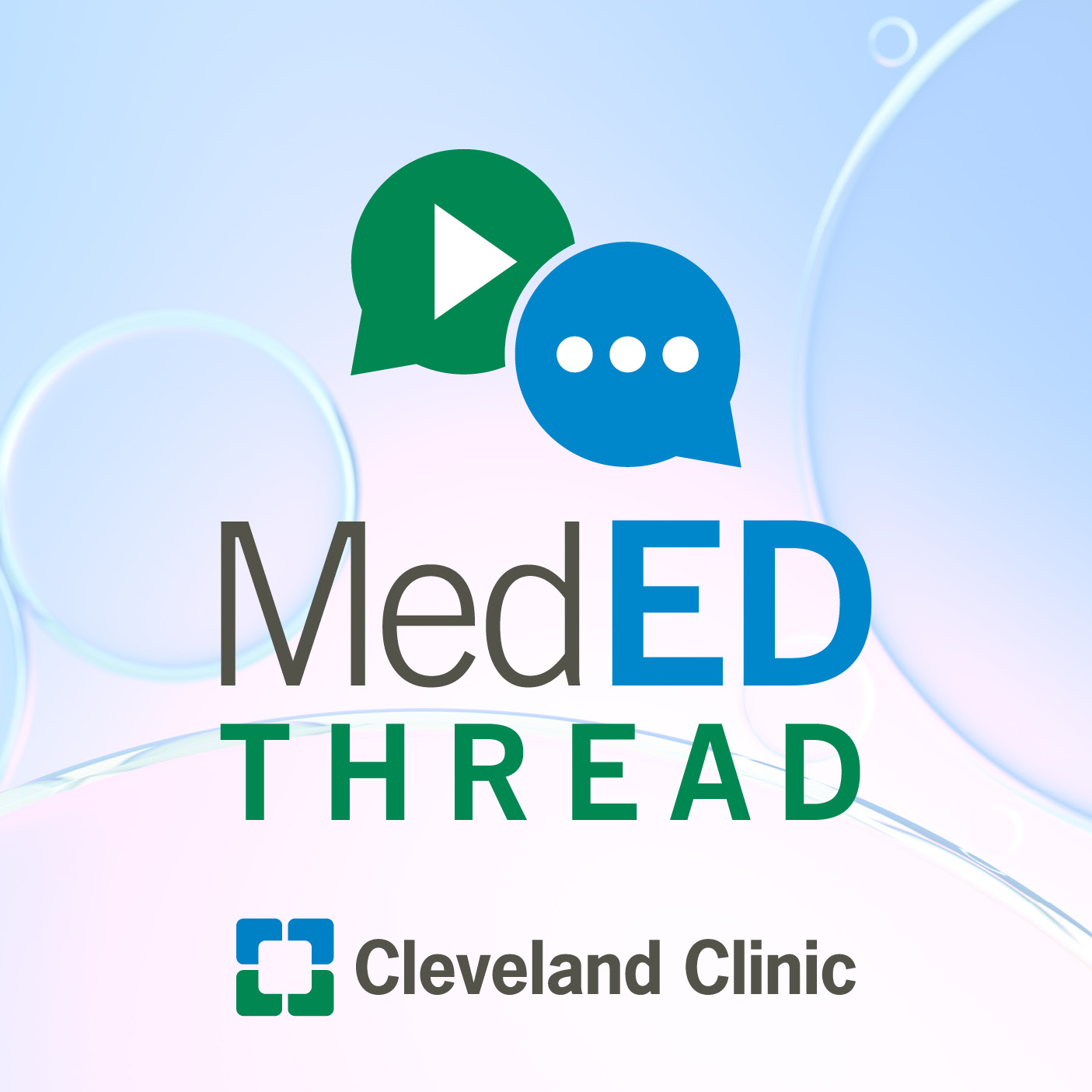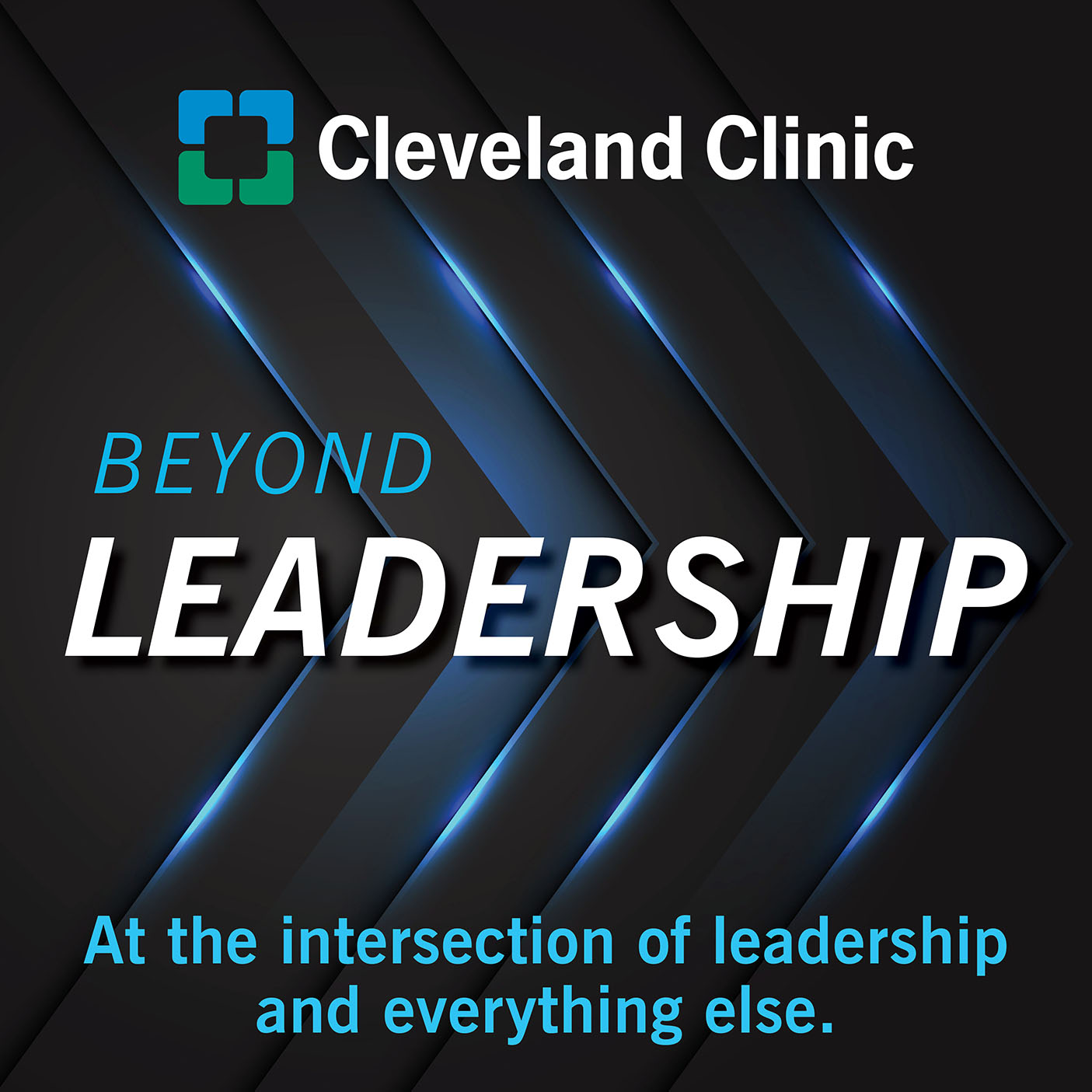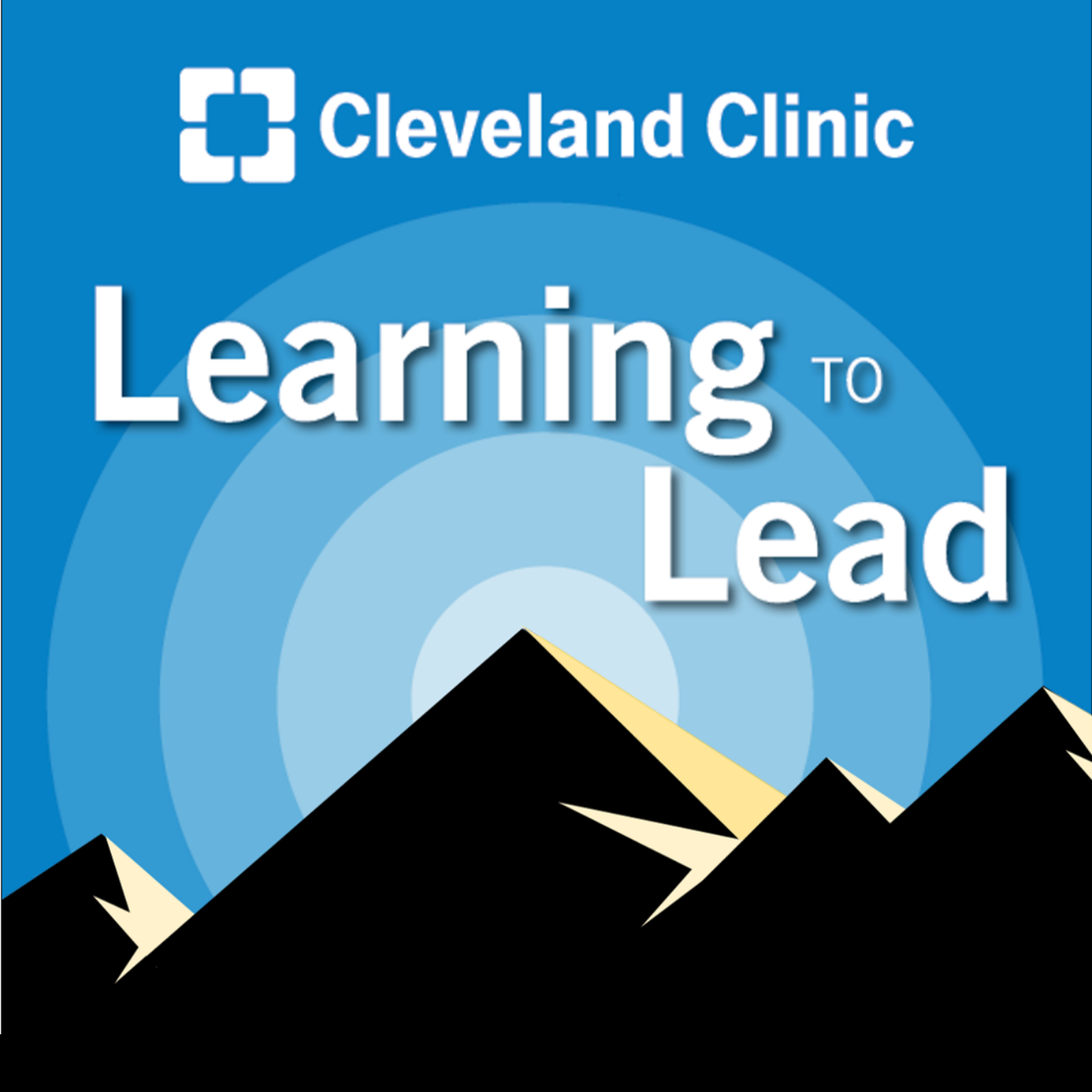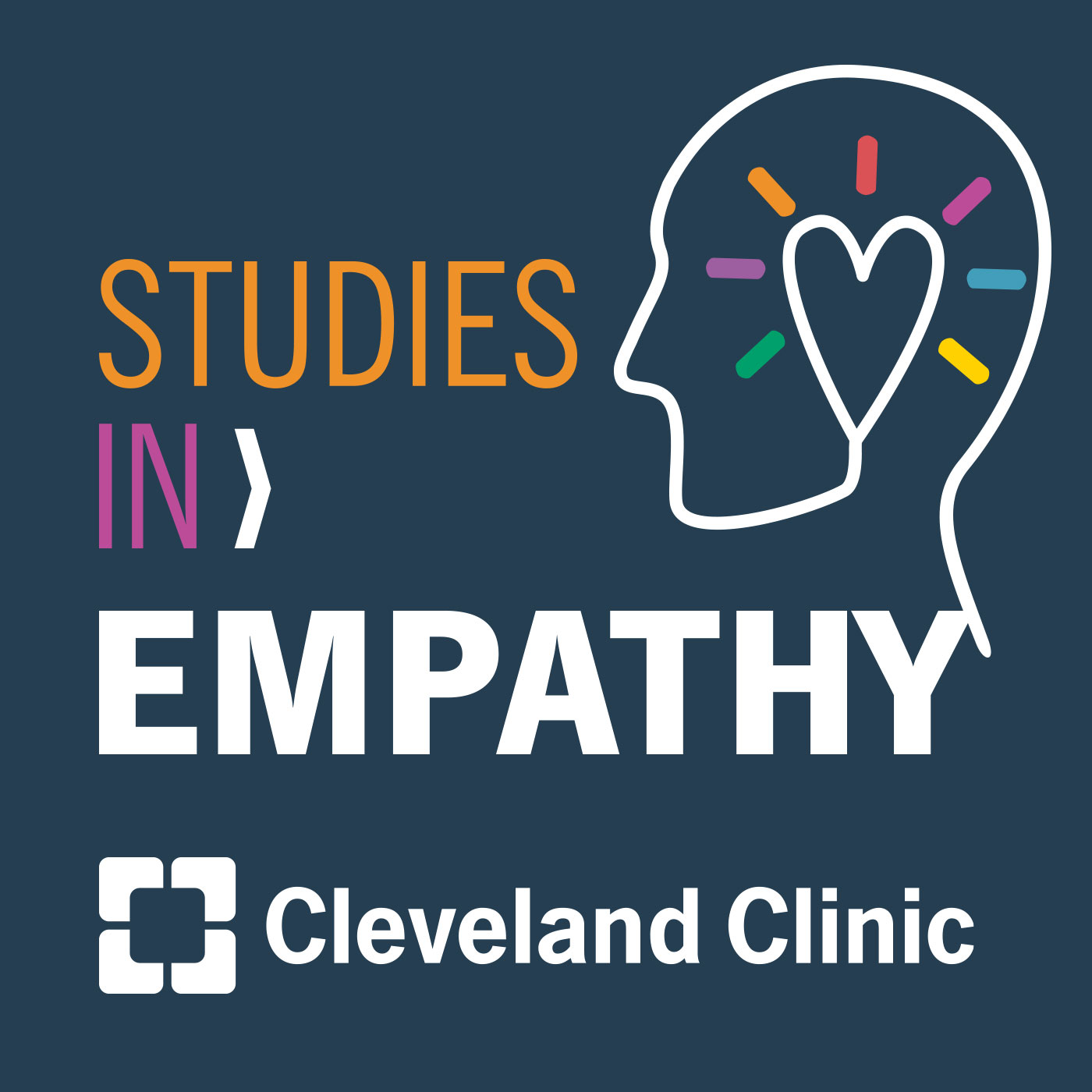Seeing What We Miss: Inattention Blindness in Healthcare
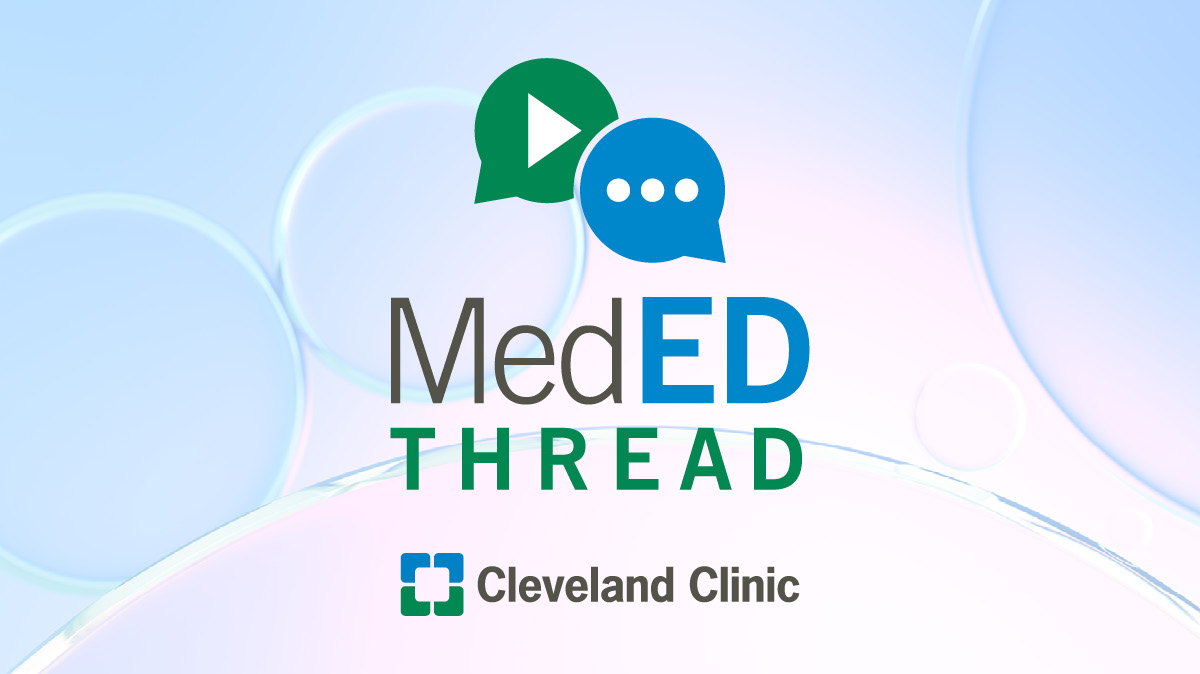
In this episode of MedEd Thread, Dr. Nicole Brown, Senior Education Simulation Specialist at Cleveland Clinic, explores the psychological phenomenon of inattention blindness—the tendency to overlook visible and important details when our attention is diverted. Drawing from her nursing background and recent research, Dr. Brown discusses how this phenomenon impacts clinical judgment, patient assessments and the delivery of high-quality care. Through relatable examples and insights from simulation-based education, the conversation highlights the challenges healthcare professionals face in noticing subtle changes in patients amidst the noise of busy clinical environments. Tune in to learn how understanding inattention blindness could reshape medical education and improve patient outcomes.
Subscribe: Apple Podcasts | Podcast Addict | Spotify | Buzzsprout
Seeing What We Miss: Inattention Blindness in Healthcare
Podcast Transcript
James K. Stoller:
Hello and welcome to MedEd Thread, a Cleveland Clinic education podcast that explores the latest innovations in medical education and amplifies the tremendous work of our educators across the enterprise.
Dr. Tony Tizzano:
Hello, welcome to today's episode of MedEd Thread, an education podcast exploring the phenomenon of inattention blindness. I am your host, Dr. Tony Tizzano, Director of Student and Learner Health here at Cleveland Clinic in Cleveland, Ohio. Today I am very pleased to have Dr. Nicole Brown, Senior Education Simulation Specialist and Advanced Certified Healthcare Educator at Cleveland Clinic here to join us. Nicole, welcome to the podcast.
Dr. Nicole Brown:
Thank you.
Dr. Tony Tizzano:
So Nicole, to get us started, if you could tell us a little bit about yourself, what brought you to Cleveland and your role here at Cleveland Clinic?
Dr. Nicole Brown:
Yeah, I actually have been born and raised here in Cleveland. Grew up on the west side and made a, the huge jump to the east side in the last couple of years. And I've been working for Cleveland Clinic since 2010, although I started my nursing career several years before working at some other local facilities. I've been working in simulation specifically since 2015 and have just found a passion for education and experiential learning.
Dr. Tony Tizzano:
Fabulous. And it, it certainly comes through in the work you've done with us before. So in today's episode, we will explore the seldom discussed psychological phenomenon of inattention blindness, whereby we fail to notice something that is very clearly visible or obvious because our attention is otherwise engaged or where something unexpected presents itself. So Nicole, if you could help frame this phenomenon and why it's an important consideration in the assessment and delivery of high quality healthcare.
Dr. Nicole Brown:
So as I mentioned before, I'm a nurse, and so a lot of my interests do stem out of nursing, but they really are applicable to anything in healthcare. And we, every day are assessing the patients around us. We are looking in their environment, we are looking at them as humans, and we're deciding what is different, what has changed, what we're concerned about, maybe how they got better, and just really wanting to understand why and how because it's so easy to ask, how did you miss that? It's so obvious. But that happens when you look at things in isolation and you're not looking at all the things that we are faced with as humans. And so as I was looking through literature and trying to define this phenomenon of we missed stuff, I stumbled upon inattention blindness, and I have been fascinated ever since.
Dr. Tony Tizzano:
Excellent. It really does strike home when you think about it. So with this latter point in mind where you're trying to have a more holistic perspective, how do you educate someone around this in context of a nurse's, for example, preliminary assessment of a patient?
Dr. Nicole Brown:
That is a question that we still need answered. We can't have a good explanation of how to fix it until we understand how often it is happening and how often it's occurring. What we do know through the work of researchers in psychology type literature, that human brains are wired to stay on task. Well, that becomes a problem when you are assessing multiple patients in a shift, in a day at one time to understand where you need to focus your attention. So the work that I have done thus far is to really understand to what extent it is even happening, can we even quantify the amount of inattention blindness that nurses have in their routine day.
Dr. Tony Tizzano:
Yeah, that's a really good point. And I can just think when I walk into a patient's room, I'm pretty much able to focus. If I've got the nurse with me, she's listening to a code going off, she's listening to a bell down the hall in another room. She may have years of experience, she may be relatively new. There are so many potential confounders to her task -
Dr. Nicole Brown:
Absolutely.
Dr. Tony Tizzano:
... to try to stay on point that might account for some of these. So are there examples of this sort of phenomenon for our listeners that occur in everyday life that would be easily recognized and understood?
Dr. Nicole Brown:
Oh goodness, yes. Anyone that has children probably lives out inattention blindness in their life every single day when their child is trying to find something that just is very elusive to them. And as a parent, you walk into the room and ta-da, there it is. That is actually a form of inattention blindness. If they're anything like my children, their room has tons of things on the floor. They are very focused on wanting to move on to the next thing, maybe video games or in the wonderful moments of homework, they just get distracted and they're not able to see the things. We also see this a lot with driving. How many times are we distracted by our cell phones? And maybe not we as in you or I, but you know, it's every other driver on the road that might be looking at their cell phone and not paying attention, and then they cause crashes and accidents.
Dr. Tony Tizzano:
Right. Never you or I.
Dr. Nicole Brown:
Absolutely (laughs).
Dr. Tony Tizzano:
So I think of a mus-, a magician that we had one at home for a birthday party and it was all distraction. You're looking at one thing, they do something else. And even when I knew what they were supposed to do, it was still hard to ferret out. And I love the, the movie where there's a scene in the Roman Empire and the person on the chariot is wearing a wristwatch they forgot to take off. And in the background there's a 747 going across the horizon (laughs).
Dr. Nicole Brown:
(Laughs).
Dr. Tony Tizzano:
But, but, but nobody noticed that in the edits because you weren't expecting, it wasn't in your focused way of thinking.
Dr. Nicole Brown:
Yep, absolutely.
Dr. Tony Tizzano:
So you mentioned earlier that this has become an area of great interest and it's a focus of your research and your dissertation. What exactly sparked that?
Dr. Nicole Brown:
It was how nurses were unable to recognize the subtlety in a patient assessment. And I started thinking about how we routinely train with simulation, and we do it in isolation. We have one patient at a time. We span what could be several hours of a patient event in about 10 to 15 minutes. And as nurses, and actually not even nurses, anyone participating in a simulation, any specialty, they are assessing, making decisions, giving interventions, again, within that 10 to 20 minutes of a simulation, what in real life would be over several hours with multiple patients, alarms and bells and rounds and families and meals and tests and such. And so how are we able to train on the subtleties within the busyness of daily life? And we're not necessarily doing that. And so it really was this smorgasbord, the, just the massive amount of workload that our brains are processing on a regular basis.
And it was this concept of inattention blindness that kept swirling around in my brain thinking we need to understand this concept more because maybe this is a reason that we're missing things related to our patients. We're missing those subtleties. We're missing even the large objects right in front of our face. And this really comes down to this concept of clinical judgment. And there is a theory written by Tanner in the early two thousands that says nurses develop clinical judgment by starting with noticing, and that they notice different things because they become salient to them. And they may be related to their background knowledge, the context of the situation, or maybe the relationship that they've developed with a patient. And as these areas become noticed, they then are able to form an opinion and have reasoning and transition and enact interventions to get an outcome. And it's this whole entire process. But if nurses fail to notice things in the beginning, one would have to question if it isn't a lack of clinical judgment, but it's a lack of data.
Dr. Tony Tizzano:
That's interesting. So I guess the question it begs is do they have time to notice? Because so often when we hear a patient telling us something, we are in our minds trying to say, okay, what does that mean? How am I gonna write that down? How will this aim my diagnosis or my impression when really what we need to do is listen to the whole story. And sometimes that story goes on for a while and we have this urge to interrupt and well, I'll tell you, this is certainly not limited to nurses 'cause I think it's any of us in healthcare who listens to a patient, do we have the time to do this well? Are we given the time to do this well?
Dr. Nicole Brown:
That is a great question. I can honestly say that I have not been involved in direct patient care in several years, but from my experiences and hearing from my colleagues that still do work directly with patients, absolutely not. We have more pressure, we have less resources, and we have leveraged technology to help us focus on things that are important. We have Vital Scout at many of our organizations where it alerts us if there's been a kind of a change in the patient's condition as it relates to their vital signs. We have popups and warnings for patients that are at greater risk for certain disease processes or outcomes, but then that becomes more noise to our brains as well.
Dr. Tony Tizzano:
Or maybe even more confounding, we have these smart phrases and so forth where instead of having to take time to type it out, what you said is just a little bit different, but close enough. I'll just click. I don't have to type it out. There goes, it falls into place. And when we have these enormous templates, for example, an assessment, physical exam for an annual checkup, patients look so similar.
Dr. Nicole Brown:
Yeah.
Dr. Tony Tizzano:
Because we're click, click, click, click, click, oh, wait a minute, that's a little bit different. Click, click, click, click, click.
Dr. Nicole Brown:
Mm-hmm.
Dr. Tony Tizzano
So those are really, really interesting points.
Dr. Nicole Brown:
And if I can extend what you just said, we rely on our electronic medical record to be able to understand what the patient looked like to the provider or the nurse, the respiratory therapist, the physical therapist before. And so that's ultimately where we develop a relationship with the patient. And if we're unable to talk about those subtleties in an accurate way, are we actually able to then recognize the subtle changes when a different provider sees them or it has been several weeks, months since you last saw them?
Dr. Tony Tizzano:
Yeah, that's a good point. I notice in my own practice now that I've left and came back and I am just confounded by the electronic medical record, I need help with it. So I really count on my nurse, but I have more time to spend with a patient. And when I look at my patient feedback, they comment on you listened longer and you reiterated what I had to say, you made sure that you were on point.
Dr. Nicole Brown:
Mm-hmm.
Dr. Tony Tizzano:
I don't think I had the time to do that before.
Dr. Nicole Brown:
Yeah.
Dr. Tony Tizzano:
And so I, I'm having a little luxury in this helping out position that I'm in right now. So, and we, we should all have that. And of course, what patients really want is our time. So very interesting.
Dr. Nicole Brown:
So the interesting fact to me, and this is building on some of the data that I have collected with my study, is when you look at what a nurse notices and not, they fall into three buckets based on the Tanner's clinical judgment model, that aspect of noticing, it's relationship, background and context. And when you look at it collectively, the nurses that participated in my study overwhelmingly did not notice things related to the relationship with the patient. And while we've been talking about time being a factor, I think medicine may have become very task oriented, complete the skill, complete this task, move on. This algorithm says to do this, this care plan says to do that. And we have started to lose the relationships with our patients, therefore we're not seeing any changes, we're not seeing their needs. And that could ultimately impact their outcome.
Dr. Tony Tizzano:
Yeah. Particularly when they have something that's a little bit off the beaten path.
Dr. Nicole Brown:
Yes.
Dr. Tony Tizzano:
And that's all, you know, we all tend to focus on what we know best. So you and I, when we had our preliminary conversation, we talked about your research, your work, and I used a word for lack of a formal term noticing imperative. Is there a level at which we have to say, this is desired and there is a certain level of competency? Is this something you can measure?
Dr. Nicole Brown:
I say yes and no. I think there's ways to measure it in a controlled environment. When you know exactly what you're looking for, like any sort of rubric or assessment, when you design education, if I know what I'm looking for, I know what I can find. But when we're looking at actual patient events, I do think it is more challenging to identify what we are noticing and not noticing, at least when we're talking about individual people. I think this is where teams come in. We've talked a lot about individual people and contributing and how that impacts the patient, but thankfully we work as teams.
It's not just a nurse that's responsible for this patient, depending on where they're at, it could be a whole slew of other caregivers. And what I have found through my research is that different people noticed or didn't notice different things. And so I think next steps and future steps could be looking at how teams notice different things and how they might be able to help each other. But unfortunately, to answer your original question, I don't think we can see what people notice as individuals or a team unless we review patient reports after the fact. We can learn from them, but not necessarily be able to make real-time changes.
Dr. Tony Tizzano:
Or where does the team actually get together where there's an exchange of ideas that's not having to go back and read their note.
Dr. Nicole Brown:
Hmm.
Dr. Tony Tizzano:
You know, do they ever go face-to-face because you're so busy?
Dr. Nicole Brown:
Yeah.
Dr. Tony Tizzano:
That's really interesting. I see this in nursing home care. I have an aunt and uncle that I'm helping care for, and I account on those group meetings where I get to hear all these people have their input. And it's clear to me when we have those meetings that it may be the first time people have really considered the things that other people are doing that impact what they are trying to accomplish as well. Well, maybe this speaks to some of those Tanner's clinical judgment points that you made and you've already mentioned. So I think it's something that's worth all of us looking at. So simulation though gives you an opportunity to put the standard patient forward, the standard scenario, and then you could have people go through that perhaps, interview that patient that's giving you this information that will say all these different points and see what your written note looks like. Is that a way to standardize the, you know, they give this history and how much of it did you actually glean?
Dr. Nicole Brown:
I think so. I think that's a great way to look at that.
Dr. Tony Tizzano:
Yeah. I think simulation and the kind of work you do is really going to be the cutting edge of helping us meet these standards that we know are important. But it's very hard to duplicate if you have a different patient each time because it's hard to critique. Well, you've given us an awful lot to think about and what lies on the horizon for your research or research like it around this issue of inattention blindness?
Dr. Nicole Brown:
This study that I just completed is really meant to be a foundational study of understanding the frequency in which inattention blindness is happening. What is still yet to be understood is does it matter? It's easy to sit here and hypothesize all the things that this could mean and the impact it could have, but it still needs to be researched to understand if it actually is something that we need to be concerned about. What I'm most interested in is understanding that inattention blindness is a human phenomenon that is experienced by all of us, although in varying degrees, but the fact that everyone can experience it, is there almost like a threshold?
Can you be up to a point so blind, but still get the right answer or have the right decision, or even further, is it something where if you develop a relationship with the patient, despite your background knowledge or your understanding of the context of the situation, but if your relationship is solid with that patient, can you get the right answer? Or does the relationship not actually matter? And let's focus in on our background knowledge. Being able to understand some more of those differences and more of those details will help us understand how we might be able to overcome it or what we need to do for future education to be able to overcome inattention blindness.
Dr. Tony Tizzano:
Very well. Well, you know, this may seem simple, but it's a complex topic with lots of nuance. Are there some things I should have asked that you think our audience should know that you'd like to talk about?
Dr. Nicole Brown:
None that I can think of right now. But I do agree with you. It is an incredibly complex topic that is just in its infancy in regards to research.
Dr. Tony Tizzano:
Well, thank you so much, Nicole. It's always a pleasure to have you. This has been a very insightful and thought-provoking episode of MedEd Thread. To our listeners, if you'd like to suggest a medical education topic to us or comment on an episode, please email us at education@ccf.org.
Thank you very much for joining, and we look forward to seeing you on our next podcast. Have a wonderful day.
James K. Stoller:
This concludes this episode of MedEd Thread, a Cleveland Clinic education podcast. Be sure to subscribe to hear new episodes via iTunes, Google Play, Stitcher, Spotify, or wherever you get your podcasts. Until next time, thanks for listening to MedEd Thread and please join us again soon.
